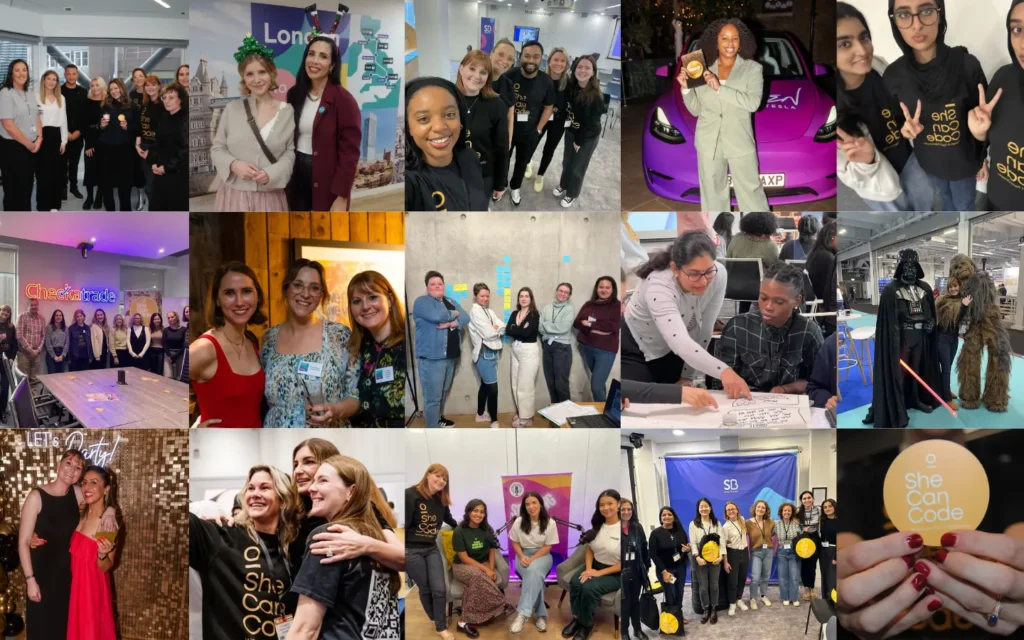Joyda Bianco is the Chief Financial Officer at Hyperview, where she oversees accounting, finance, and policy.

As a well-sought after finance professional, she also serves part-time as CFO for HomeD, a social impact company focused on eradicating homelessness. Previously, Joyda was Manager of Financial Planning and Analysis at G&F Financial Group. Before that, Joyda held financial roles at Calgary Economic Development, City of Vancouver, and Doctors of BC. She holds an MBA from UBC Saunders School of Business and is a CPA and CGA.
In the fast-paced worlds of technology and finance, the path to leadership is often fraught with challenges—especially for women.
As someone who has navigated this complex terrain to reach the C-suite, I’ve learned that success lies in mastering the delicate balance between professional ambition and personal life, all while confronting persistent gender biases.
My journey to becoming a CFO began with a pivotal moment: the convergence of impending motherhood and the decision to pursue an MBA. This experience taught me an invaluable lesson early on—true success comes from strategic prioritisation rather than attempting to give 100% to everything simultaneously. It’s a principle that has guided me throughout my career, especially as I made an unexpected but rewarding transition into the tech industry.
Entering the world of startups without a technical background was daunting, but it reinforced a crucial truth: leadership excellence isn’t solely about technical expertise. It’s about bringing fresh perspectives, fostering a positive culture, and having the adaptability to thrive in new environments. These qualities proved instrumental in navigating and succeeding in a predominantly male field.
As we continue to push for progress in tech and finance, it’s clear that the challenges women face are complex and deeply rooted. But with each barrier we overcome, we pave the way for a more innovative, inclusive, and equitable future—not just for women, but for the industries.
Cracking the Glass Ceiling: Overcoming Gender Bias
One of the most enduring obstacles facing women in both finance and tech is underrepresentation, particularly in leadership roles. Despite years of effort, the numbers tell a stark story:
Women in the Workforce (2023):
- Overall workforce: 41.9%
- Senior leadership positions: 32.2%
- Median pay gap: 14.3% less for women
These statistics underscore a troubling reality: while women make up a significant portion of the workforce, their presence diminishes dramatically at higher levels of leadership. The pressures on women to balance work and home life further complicate the path to the top, particularly in industries that demand long hours and constant availability.
Creating policies that support women at all stages of their careers is a necessary step forward. At Hyperview, for instance, the introduction of a new parental leave policy was a game changer. By fostering an environment where both women and men can take the time they need for family without fearing career setbacks, companies can attract and retain top talent.
Solutions for a Balanced and Inclusive Workforce
Solving these challenges starts with a shift in mindset. Women in leadership must feel empowered to prioritise tasks and accept that not everything can be perfect at once. Flexibility in the workplace is key to achieving this balance. Companies that measure success by outcomes rather than hours are more likely to retain talented women who need flexibility to manage competing demands.
Leadership visibility is another important factor in driving change. It’s not enough to simply hold a leadership position; it’s vital to be a visible advocate for women in the workplace. By showing up, mentoring, and sharing experiences, women in leadership can help create a more inclusive culture for the next generation.
When it comes to recruitment, companies need to go beyond traditional methods of evaluating candidates. A holistic approach, considering not only qualifications but also individual potential, is essential. An example is when our CTO insisted on hiring a young female developer despite mixed references. After digging deeper, it became clear that her outspoken nature—a trait undervalued at her previous company—was precisely what we needed to enhance our team’s dynamic. This reinforces the idea that great talent often lies beyond the surface.
Diversity as a Strategic Imperative
Diversity isn’t just a social goal; it’s a business imperative. In sectors like data centres – where innovation drives growth – diverse teams bring the breadth of perspectives needed to solve complex problems. Studies have long shown that companies with greater diversity tend to outperform those without it, both financially and in terms of innovation.
This focus on diversity is becoming increasingly important, especially as industries like data centres face growing skills shortages. A recent Uptime Institute survey found that over half of data centre operators are struggling to find qualified personnel, marking a significant increase in the talent gap. Companies that prioritise diversity and inclusion are not only more attractive to potential employees but are also better positioned to meet customer demands.
At Hyperview, diversity has been a key focus as we look to close the skills gap. Beyond merely recruiting diverse talent, it’s essential to ensure that these individuals are supported and empowered to contribute fully. This means not just having women in the company, but also ensuring representation across teams and projects. Policies and cultures that foster inclusion at every level of the organisation are crucial to retaining top talent in a competitive industry.
Building a More Inclusive Future
The future of the data centre industry—and tech and finance more broadly—depends on its ability to attract and retain diverse talent. For women aspiring to leadership roles, having a strong support system both at work and in life is critical. Surrounding oneself with mentors and allies, while also cultivating resilience, is essential for navigating the challenges that inevitably arise.
Companies must recognise that addressing gender biases and fostering inclusion isn’t just a “nice-to-have”. It is an essential part of remaining competitive in industries that are rapidly evolving. By taking proactive steps to support diverse leadership and create inclusive environments, businesses can ensure they are positioned for long-term success.
The time for change is now. As the demand for talent grows, so must the commitment to building workplaces where everyone, regardless of gender, can thrive and contribute to the success of the company.








